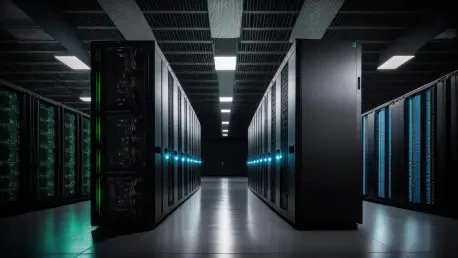Understanding Missouri’s Data Center Boom
Missouri has emerged as a significant hub for hyperscale data centers, driven by the escalating demands of artificial intelligence and expansive digital services. This growth positions the state as a key player in the tech industry, with major corporations like Meta and Google establishing substantial operations. These facilities cater to the computational needs of cutting-edge technologies, making Missouri an attractive destination due to its central location and supportive economic policies.
A standout example of this boom is Port KC’s ambitious “Project Kestrel” in Kansas City, which aims to develop six hyperscale data centers spanning 1.8 million square feet. This initiative promises not only technological advancement but also significant economic impact through job creation and infrastructure development. The project underscores Missouri’s strategic importance in meeting the nation’s digital infrastructure needs.
Beyond individual projects, the broader trend reflects a surge in demand for data storage and processing capabilities. As businesses and consumers increasingly rely on cloud services and AI-driven solutions, Missouri’s role as a data center epicenter continues to grow, bringing both opportunities and challenges to the forefront of local and state discussions.
The Energy Cost Conundrum in Missouri
Debunking Myths Around Data Centers and Rate Hikes
A prevalent misconception holds that data centers are the primary culprits behind Missouri’s rising electricity costs. However, research from authoritative sources like the Lawrence Berkeley National Laboratory and the Brattle Group reveals a different story. These studies highlight that the dominant factors driving rate increases are investments in aging grid infrastructure and protections against extreme weather, rather than the energy consumption of data centers.
This evidence challenges the narrative often circulated in public discourse. States with significant data center presence, such as North Dakota and Virginia, have managed to maintain lower average electricity costs over recent years, suggesting that these facilities are not the burden they are often portrayed to be. Understanding this distinction is critical for informed policy-making and public perception in Missouri.
Shifting the focus from blame to systemic issues allows for a more constructive dialogue. Addressing infrastructure inefficiencies and weather-related vulnerabilities can mitigate rate hikes more effectively than targeting data center operations, paving the way for balanced growth in the tech sector without unfairly burdening consumers.
Current Energy Cost Trends and Projections
Electricity costs in Missouri have seen notable increases, with some areas experiencing hikes of nearly 20 percent, aligning with national trends of rising utility expenses. This upward trajectory places additional pressure on households and businesses already grappling with economic uncertainties. The data underscores the urgency of identifying sustainable solutions to manage energy pricing.
Looking ahead, forecasts indicate that without strategic interventions, energy costs could continue to climb, particularly as data center growth amplifies demand on the grid. Projections suggest that over the next few years, from 2025 to 2027, demand may outpace current capacity if infrastructure upgrades lag behind. This scenario necessitates proactive planning to prevent potential shortages or price spikes.
The intersection of data center expansion and energy pricing remains a critical concern. While these facilities contribute to demand, their role must be contextualized within broader grid challenges. Effective management of this dynamic could transform a potential liability into an opportunity for energy innovation and cost stabilization across the state.
Challenges of Integrating Data Centers into Missouri’s Energy Landscape
Balancing the energy demands of data centers with the needs of local communities presents a complex challenge for Missouri. These facilities require substantial power, often straining existing grid capacity, especially in areas with aging infrastructure. Ensuring reliability for both tech operations and residential users calls for significant investment and foresight in energy distribution systems.
Community pushback has surfaced as a notable hurdle, with residents in areas like Platte County and St. Louis expressing concerns over potential utility rate hikes. Fears center on whether the benefits of data center incentives might prioritize corporate interests over local affordability. These apprehensions highlight the need for clear communication and inclusive decision-making processes to address public unease.
Solutions lie in strategic energy planning and targeted grid upgrades to accommodate growing demand without compromising service quality. Collaborative efforts between state authorities, utility providers, and tech companies could facilitate infrastructure improvements, ensuring that capacity expansions benefit all stakeholders. Such measures would help alleviate tensions and foster a more harmonious integration of data centers into Missouri’s energy framework.
Economic and Regulatory Implications of Data Center Growth
Missouri’s regulatory environment has played a pivotal role in attracting data center investments through incentives and supportive policies. These measures have spurred economic activity, with projects like “Project Kestrel” poised to generate millions in tax revenue and create high-paying jobs. The influx of tech giants also stimulates local economies by engaging contractors and suppliers during construction phases.
However, the benefits must be weighed against the need for equitable resource allocation. Transparent policies are essential to ensure that incentives for data centers do not overshadow community priorities or small business needs. Regulatory frameworks should enforce energy efficiency standards, holding companies accountable for sustainable practices while maximizing economic returns for the state.
Striking this balance requires ongoing dialogue between policymakers, industry leaders, and local representatives. By fostering an environment of accountability and fairness, Missouri can capitalize on the economic advantages of data center growth while safeguarding the interests of its residents. This approach ensures that prosperity is shared broadly, rather than concentrated among a few corporate entities.
Future Opportunities: Data Centers as Partners in Progress
Data centers hold untapped potential to drive energy efficiency through innovative technologies and sustainable practices. Advanced cooling systems, for instance, reduce water and electricity usage compared to traditional methods, offering a model for resource conservation. Encouraging the adoption of such technologies could position Missouri as a leader in green data center operations.
Beyond environmental benefits, these facilities contribute to long-term economic stability by creating high-paying jobs with average salaries often exceeding $100,000. The tax revenue generated supports public services, while the infrastructure underpins critical digital services like telemedicine and e-commerce, which are vital to modern life. This multifaceted impact underscores their role as economic anchors.
Moreover, data centers can stimulate broader grid improvements through their investment in local energy systems. Partnerships between tech companies and utility providers could accelerate upgrades, benefiting all consumers with more reliable and efficient power. Embracing this collaborative spirit transforms data centers from mere consumers of energy into active contributors to Missouri’s progress.
Conclusion: Striking a Balance for Missouri’s Energy Future
Reflecting on the insights gathered, it becomes evident that data centers represent both a significant opportunity and a complex challenge for Missouri’s energy landscape. Their capacity to fuel economic growth and innovation is clear, yet so are the hurdles of managing increased energy demands and addressing community concerns. The discussions highlight a path that demands careful navigation to harmonize these dual aspects.
Moving forward, actionable steps emerge as critical to ensuring sustainable success. Policymakers and industry leaders need to prioritize transparent frameworks that fairly distribute benefits and responsibilities. Investments in grid modernization stand out as a non-negotiable requirement to support both data center operations and residential needs without escalating costs.
Additionally, fostering public-private partnerships offers a promising avenue to drive innovation in energy efficiency, turning potential conflicts into collaborative victories. By focusing on these strategies, Missouri positions itself to not only manage the challenges of data center growth but to leverage them as catalysts for a more resilient and prosperous energy future.









